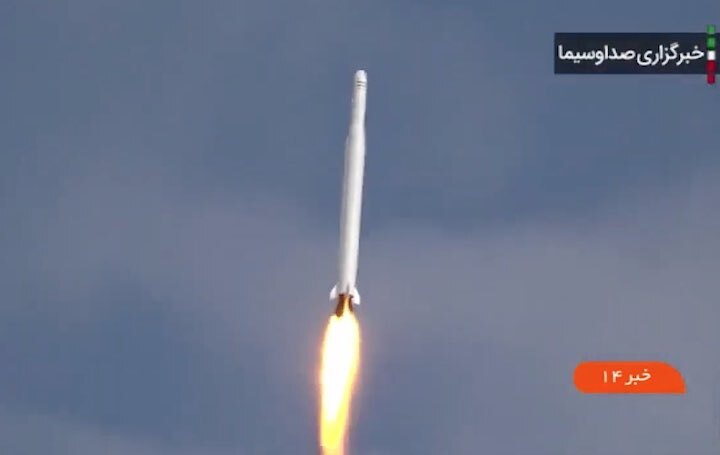9.03.2022

U.S. military tracking radars confirmed claims from Iran’s Revolutionary Guard Corps Tuesday that the Iranian military placed a small satellite into orbit.
Iranian officials said a Qased launcher successfully placed the Noor 2 satellite into orbit Tuesday. Iran’s state broadcaster showed video of the launch, which apparently took off from the Shahroud missile range in the northeastern part of the country.
Officials did not disclose a launch time, but the Qased rocket likely lifted off shortly after 0500 GMT (12 a.m. EST; 8:30 a.m. Iran Standard Time). The rocket is made of three stages, with a first stage based on an Iranian ballistic missile upgraded to loft a small payload into orbit.
Iran’s Revolutionary Guard Corps said it placed a satellite named Noor 2 into orbit. The government-run Islamic Republic News Agency described Noor 2 as a reconnaissance satellite. The news agency said ground teams had received the first signals from the spacecraft.
The Noor 2 satellite likely weighed less than 100 pounds (45 kilograms) at launch, but Iranian officials revealed no more details about the mission. It appears to be a follow-up to the Noor 1 satellite launched on the same type of rocket in April 2020.
The Qased launcher flew southeast over Iranian territory. Tracking data released by the U.S. military showed two objects — likely the rocket’s upper stage and Noor 2 — orbiting at an altitude of roughly 310 miles (500 kilometers) at an inclination of 58.3 degrees to the equator.
The launch Tuesday was the second use of the Iranian military’s Qased satellite launcher. Both flights of the Qased — at least those publicly known — have been successful.
In parallel with the military satellite program, Iran has developed a series of Safir and Simorgh rockets, purportedly for peaceful civilian purposes. The Safir and Simorgh rockets have a spotty success record, with the Safir not reaching orbit since 2015. The larger Simorgh has never placed a satellite into orbit in a series of attempts, most recently in December.
There’s also been evidence revealed in overhead satellite imagery of rocket explosions at Iran’s Imam Khomeini Spaceport, a launch complex separate from the Shahround missile range used for Tuesday’s mission.
Former President Donald Trump tweeted an image of a damaged Iranian launch pad in 2019, revealing debris from what analysts said was likely a pre-launch explosion. The image was taken by a classified National Reconnaissance Office spy satellite.
Commercial satellite imagery last month showed fresh damage at the Imam Khomeini Spaceport, suggesting another pre-launch mishap occurred there.
Quelle: SN
